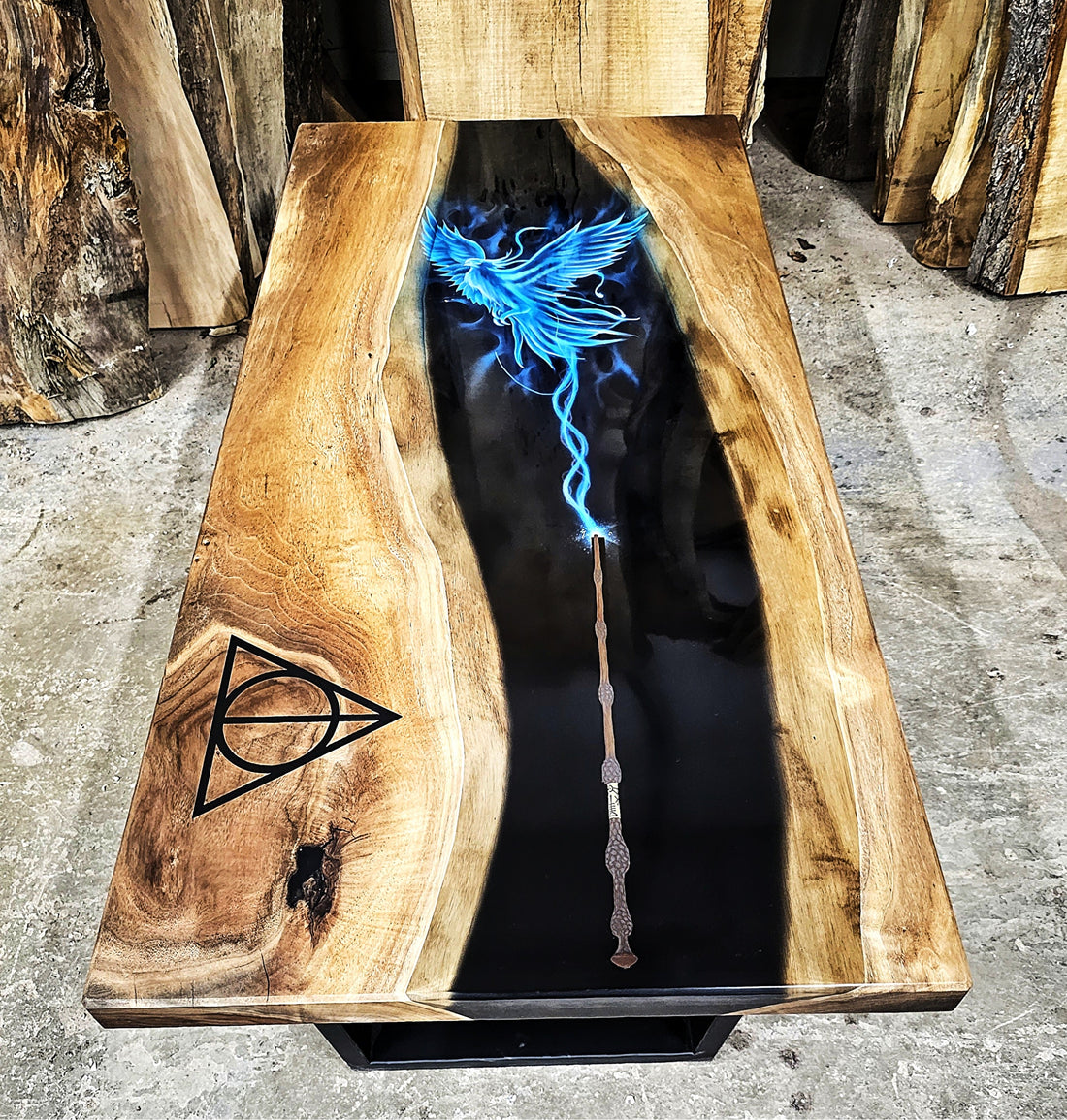When it comes to creating beautiful custom wood and resin furniture, every detail counts. At Backyard Resin, we know that the final touch—sanding and polishing—plays a crucial role in ensuring your piece not only looks stunning but also performs well over time. In this post, we’ll discuss why sanding and polishing are essential steps in resin furniture design and how they contribute to the durability, beauty, and overall quality of your custom furniture.
Why Sanding Is Crucial
Sanding is one of the most important steps in the resin furniture-making process. Once the resin is poured and has cured, it forms a hard, smooth surface—but this surface isn’t always perfect right away. It may have imperfections, such as bubbles, unevenness, or rough patches. Sanding helps to smooth out these imperfections and create a flawless, even surface.
The goal of sanding is to remove any excess resin, smooth rough edges, and prepare the piece for the next stage: polishing. Sanding also ensures that the wood and resin surfaces bond well, preventing issues like resin peeling off or uneven wear. By carefully sanding, we can achieve a surface that not only looks polished but is also structurally sound, enhancing the overall quality of the furniture.
The Role of Multiple Sanding Stages
Sanding resin furniture isn’t a one-step process. To achieve the perfect finish, multiple stages of sanding are often required, using progressively finer grit sandpaper. This is known as “wet sanding” when done with water to avoid dust and help achieve a smooth, clean finish.
- Coarse Sanding (80-120 grit): This is the first stage, which removes large imperfections and smooths out rough patches. This step is essential for shaping the piece and getting rid of any visible flaws.
- Medium Sanding (180-220 grit): Once the rough sanding is done, we move to a medium grit to further refine the surface, smoothing out any sanding marks left from the coarse grit.
- Fine Sanding (320-600 grit): The final sanding stage uses finer grits to create an ultra-smooth finish, preparing the piece for polishing. At this point, any scratches from the previous sanding stages are removed, leaving a sleek, flawless surface.
By using multiple sanding stages, we ensure that the resin and wood surfaces are perfectly prepared for the final polish.
The Polishing Process: Adding the Finishing Touch
Once sanding is complete, the next step is polishing. Polishing brings out the full beauty of the resin and wood, providing a glossy, mirror-like finish that enhances the natural beauty of the materials. It also plays a key role in protecting the surface and increasing the durability of the piece.
Polishing not only adds a beautiful shine to the resin but also smooths out any minor imperfections left after sanding. It’s the final step in ensuring that your furniture has a flawless, high-end finish that can withstand daily use without losing its luster.
During the polishing process, a special polishing compound is applied to the surface, which helps to smooth out any micro-abrasions left from sanding. A buffing pad or polishing machine is typically used to apply the compound and achieve that perfect, glossy shine. The result is a stunning finish that looks brand new and is resistant to scratches and damage.
Benefits of Sanding and Polishing in Resin Furniture
- Aesthetics: Proper sanding and polishing enhance the visual appeal of your furniture. A smooth, glossy finish brings out the natural beauty of the wood grain and adds depth and vibrancy to the resin.
- Durability: Sanding and polishing not only improve the appearance but also ensure the longevity of your furniture. A well-polished piece is less likely to show wear over time, as it has a smooth, resilient surface that resists scratches, stains, and moisture.
- Enhanced Resin Clarity: The polishing process also helps to clarify the resin, making it more transparent and allowing the colors and patterns within the resin to shine through. This is especially important for artistic designs, like river tables, where the interplay between the resin and wood is a key design element.
- Protection: The polishing process creates a protective layer on the surface, adding resistance against everyday elements like water, dust, and dirt. This makes the furniture easier to maintain and keeps it looking great for longer.
Conclusion
Sanding and polishing are critical steps in the creation of resin furniture, ensuring that each piece achieves its maximum potential in terms of both beauty and durability. By taking the time to carefully sand and polish every surface, we’re able to deliver furniture that not only looks stunning but also stands the test of time.
At Backyard Resin, we take pride in every step of the process—from selecting the finest wood and resin to meticulously sanding and polishing each piece. This dedication to craftsmanship ensures that your custom furniture will continue to shine, both in terms of appearance and longevity.
If you’re looking for custom wood and resin furniture with a perfect, polished finish, contact us today to discuss your design ideas. We’re here to help bring your vision to life!

